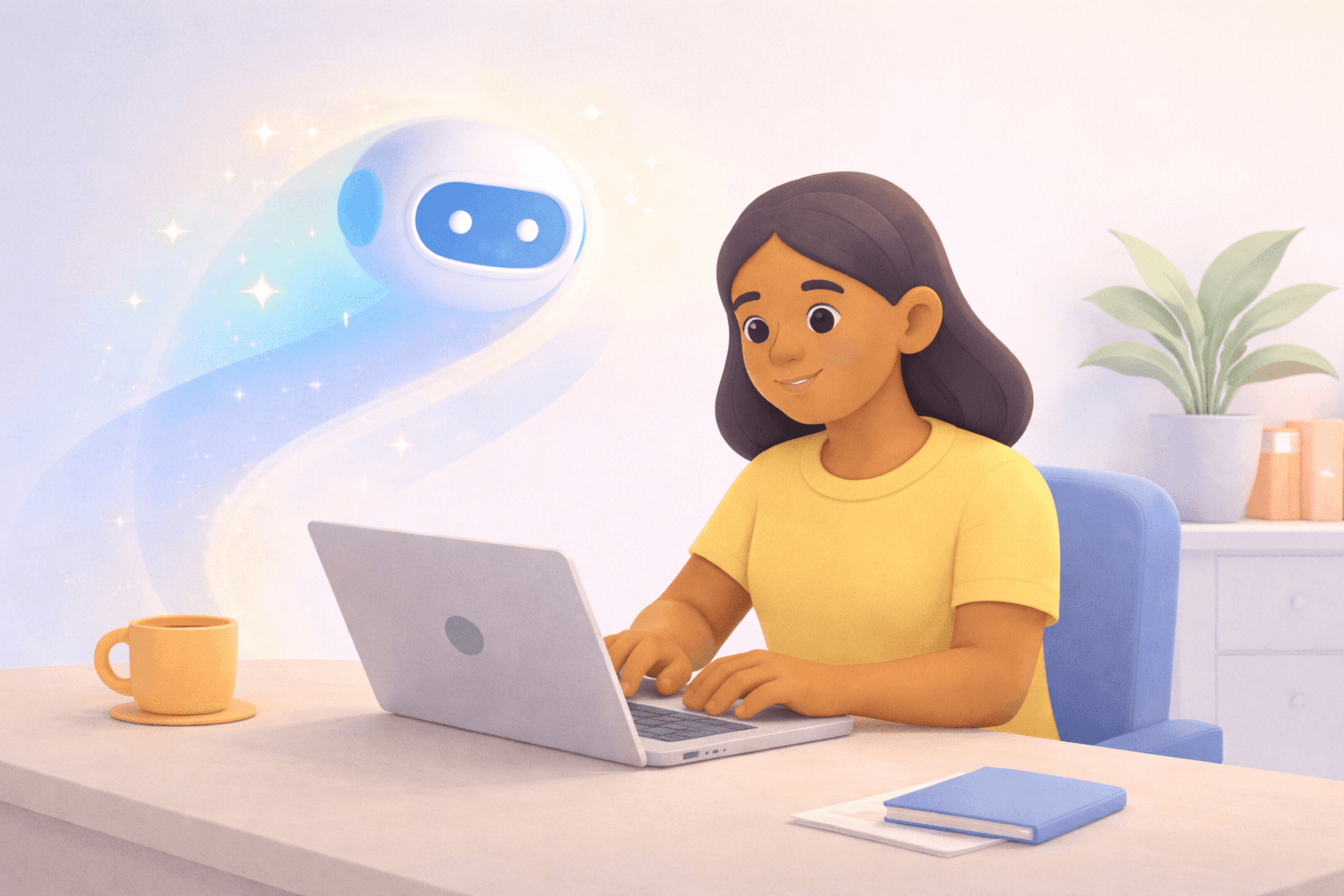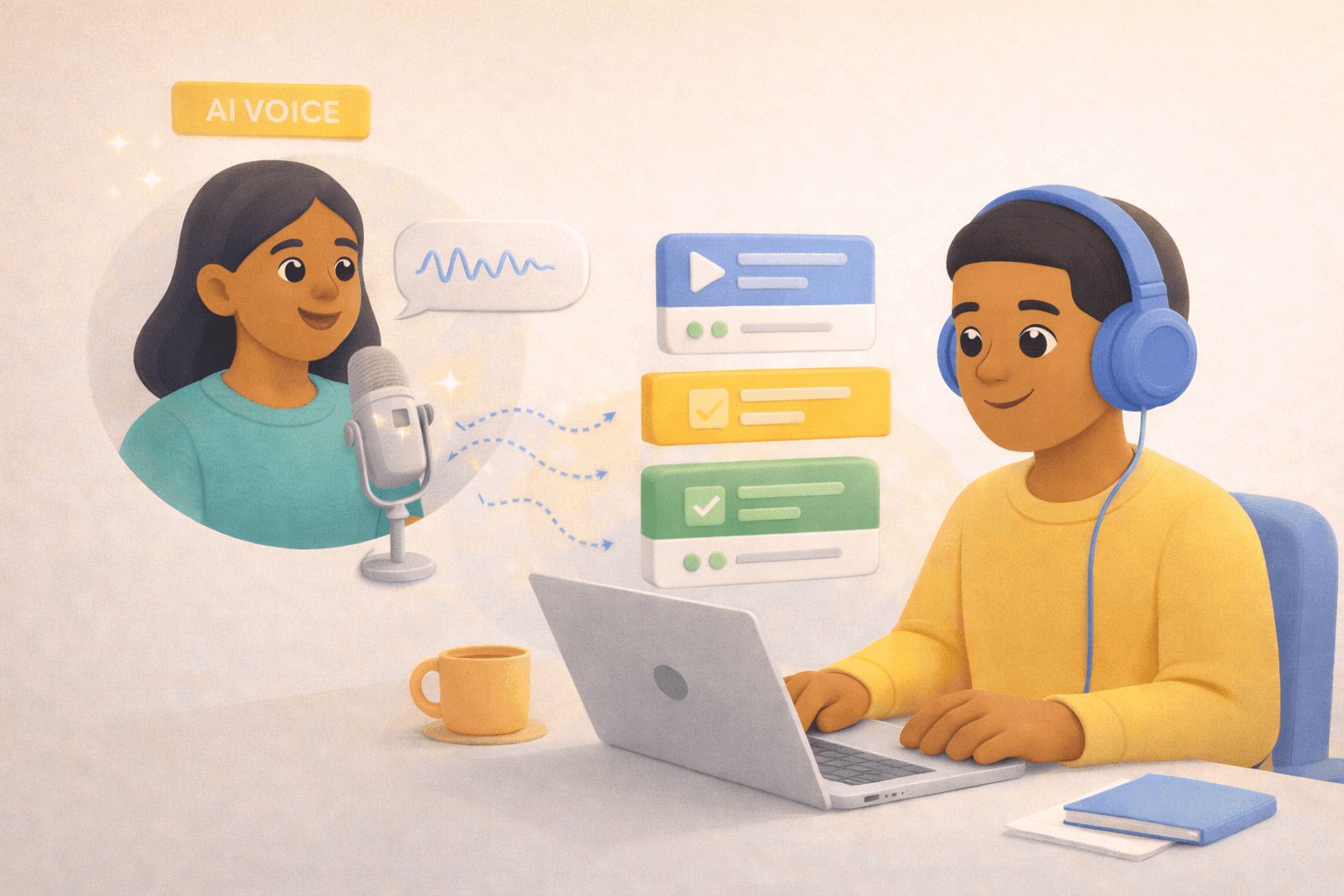Curating knowledge
Top 8 L&D trends happening in 2025 (and what we’ve learned)
From AI-powered personalization to immersive learning experiences, the trends shaping this year aren’t just buzzwords. They’re shaping how organizations build capability, keep people engaged, and adapt to real-world challenges.

Ryan Macpherson
Aug 13, 2025



Editor:
Stephanie Chan
You’ve seen the headlines.
Skills gaps widening. Roles evolving faster than job descriptions can keep up. New tools launching before we’ve even mastered the old ones.
In the first half of 2025, learning and development teams have been trying to keep knowledge flowing rather than letting it get trapped in outdated slide decks or siloed departments. Using the right knowledge transfer tools helps make that shift possible, so information moves where it’s needed, when it’s needed.
From AI-powered personalization to immersive learning experiences, the trends shaping this year aren’t just buzzwords. They’re shaping how organizations build capability, keep people engaged, and adapt to real-world challenges.
This mid-year review looks at the learning and development trends already making an impact and what they’re teaching us about the future of workplace learning.
Why these trends are emerging in 2025
The shifts we’re seeing this year aren’t random. They’re a response to the way work, technology, and expectations are changing in real time.
Innovation & technological advancements
Artificial intelligence, automation, and data analytics are reshaping how we approach the learning process. Instead of relying solely on static training programs, L&D leaders can now tap into AI-powered learning platforms that:
Adapt content to the learner
Track progress
Predict future skill needs
These technological advancements enable organizations to spend more time on strategic work (like aligning learning programs with organizational goals) and less on repetitive tasks.
The skills gap & business pressure
Rapid innovation means new skills are needed faster than traditional corporate training can deliver them.
The result?
A growing skills gap that threatens organizational success. Many companies are rethinking how they design employee development programs to keep pace.
Identifying skill gaps early allows organizations to respond faster with targeted training materials. When knowledge isn’t shared effectively, it slows problem-solving and widens the gap. The cost of lost knowledge is a real and measurable risk for organizations navigating rapid change.
Employee expectations & engagement
Today’s workforce expects more than an annual training session. They want continuous learning opportunities that help them grow in their current role and prepare them for future challenges.
When employees see that leadership development, critical thinking, and emotional intelligence are valued and supported, it boosts employee engagement and retention.
L&D leaders are responding by building personalized learning paths and offering learning at each person’s own pace, making it easier for knowledge sharing to happen naturally across teams.
Top learning & development trends happening in 2025
The first half of the year has already revealed which trends are more than hype. These are the approaches L&D leaders are testing, refining, and scaling.
Personalization through AI & adaptive learning
In 2025, artificial intelligence is driving a shift toward personalized learning paths that adapt in real time. Employees aren’t just given generic training programs. They receive content matched to their current skills, role, and career goals.
For example, Salesforce uses AI to deliver custom learning paths based on employees’ roles and skill gaps. The system analyzes usage data and performance to surface content that aligns with each learner’s needs, making training more relevant and impactful.

What we’ve learned so far:
Personalized learning increases employee engagement by meeting learners at their own pace.
Adaptive learning can identify skill gaps early, guiding targeted employee development.
AI-powered platforms like Coassemble help L&D leaders turn existing training materials into interactive courses in minutes, cutting manual work and keeping knowledge readily available. You can also explore alternatives to ChatGPT for course creation to see how other AI tools compare.
These systems also support self-directed learning, giving employees control over when and how they develop new skills.
Microlearning & just-in-time training
Bite-sized learning experiences have become essential for employees who need answers fast. Microlearning delivers focused lessons in minutes, while just-in-time learning ensures that knowledge is available exactly when it’s needed.
For example, Google’s Think with Google platform applies microlearning principles to marketing education: delivering short, actionable insights, creative examples, and tools that professionals can use immediately in real-world scenarios.

What we’ve learned so far:
Bite-sized content improves skills retention by keeping learning sessions focused.
Just-in-time access ensures employees can apply knowledge directly to real-world challenges.
This format works for both technical skills and leadership development, making it a valuable addition to training programs.
Social & collaborative learning
Learning sticks when it’s shared. Social learning turns colleagues into both teachers and students. Peer interaction deepens understanding and often doesn’t feel like “training” at all.
For example, 360Learning’s platform is built around peer training and collaborative course creation. It enables anyone, even non-L&D experts, to author interactive courses swiftly, breaking down barriers to knowledge sharing and empowering employees to drive their own training.

What we’ve learned so far:
Social learning makes training interactive and engaging.
Peer feedback sharpens critical thinking and emotional intelligence.
Collaboration builds leadership skills and helps knowledge stick long-term.
Learning in the flow of work
Training is more impactful when it happens in the tools people already use. Learning in the flow of work keeps knowledge in motion: employees apply new skills immediately instead of parking them for later.
For example, Microsoft Viva Learning delivers training directly inside Microsoft Teams. Employees can search for courses, view personalized learning recommendations, and complete modules without leaving their chat or meeting environment. This approach supports continuous learning while keeping the workflow intact.

What we’ve learned so far:
Embedding learning into daily workflows boosts learner engagement.
Employees can build new skills without stepping away from core tasks.
This method supports continuous learning and aligns with organizational goals.
Data-driven learning & analytics
L&D leaders now have a crystal-clear view of how learning affects business outcomes. With platform insights and behavioral data, organizations can see which learning materials are trending and where skills development is lagging, and then respond fast.
For example, in 2024, LinkedIn analyzed platform-wide activity—covering one billion members, 14 million jobs, and five million profile updates per minute—to understand how skill-building and learning culture impact key performance outcomes like retention and internal mobility.
What we’ve learned so far:
Learning analytics reveal which skills employees are adding and engaging with most.
Data helps refine training strategies for stronger skills retention and business alignment.
Insights from platform usage strengthen the business case for continuous learning investment.
Inclusive & accessible design
A diverse workforce needs diverse ways to learn. Inclusive design ensures every employee, regardless of ability, language, or learning style, can participate fully in the learning process. Accessibility isn’t just compliance; it’s a driver of employee engagement and retention.
For example, LinkedIn Learning provides closed captions, transcripts, keyboard navigation, and multi-language options across its course library. These features make training resources usable for employees with different needs and preferences, supporting both equity and organizational success.

What we’ve learned so far:
Accessible training programs expand learner engagement to a wider audience.
Multi-format and multi-language content improves employee skills retention.
Inclusive design strengthens organizational goals around diversity and inclusion.
Skills-based development & internal mobility
Organizations increasingly emphasize skills, rather than titles, as the foundation for career growth and internal movement. That means building capabilities, not boxed roles, and giving teams paths to develop and share them.
For example, Unilever’s Flex Experiences internal talent marketplace allows employees to work on projects alongside their main role. This AI-powered platform matches staff to opportunities that align with their skills and career interests. It has received a 95% employee endorsement rate and supported rapid deployment across nearly 90 countries.

What we’ve learned so far:
A skills-first approach helps uncover hidden talent and address skill gaps quickly.
Internal mobility supports employee development, career growth, and engagement.
Purpose-driven experiences that align skills with opportunities boost retention and business agility.
Immersive & experiential learning (AR/VR)
Immersive learning technologies like augmented reality (AR) and virtual reality (VR) let employees enter real-world scenarios and build essential skills in a safe, controlled environment.
For example, Walmart has trained over 1 million associates using virtual reality-based learning simulations. Through platforms like ArborXR and Strivr, the company delivers immersive, scenario-based training to boost confidence, retention, and real-world readiness.

What we’ve learned so far:
Immersive learning technologies help develop confidence and critical thinking through realistic practice.
VR is especially effective for both technical and soft-skill training.
Early adopters gain a powerful competitive edge in workforce readiness.
Why staying ahead of L&D trends matters
The first half of 2025 has shown us that learning and development trends are about new ways of thinking, not just about new tools. From personalized learning paths powered by AI to immersive training experiences, L&D leaders are reshaping how employee skills are built, shared, and applied.
The takeaway? Learning doesn’t stand still. Employee development thrives when it’s continuous, embedded in real work, and aligned with organizational goals. You don’t need to adopt every new trend at once. Start with one or two that solve your most pressing challenges, then scale what works.
When knowledge stays in motion, organizations can adapt faster, engage more deeply, and turn today’s learning into tomorrow’s competitive advantage. If you’re ready to start, you can sign up for Coassemble’s free plan and begin creating interactive learning experiences today.
FAQs about learning and development trends
What are the major learning and development trends in 2025?
Key trends include AI-powered personalization, microlearning, social learning, data-driven analytics, immersive training, and skills-based development.
Why do learning trends matter for growing companies?
They help close skills gaps, boost employee engagement, and align training programs with business goals for long-term success.
How do I know which trends to adopt?
Start with trends that address your most urgent challenges, then track results and expand as they prove effective.
What’s the difference between microlearning and traditional training?
Microlearning delivers short, targeted lessons that fit into daily work, while traditional training is often longer and less frequent.
Which tools can help me implement these trends?
Modern platforms like Coassemble can help L&D leaders create interactive courses, track learner engagement, and adapt content quickly.
Read More
Join the knowledge revolution today
Unlock knowledge. Boost engagement. Drive results
No credit card required

Join the knowledge revolution today
Unlock knowledge. Boost engagement. Drive results
No credit card required

Join the knowledge revolution today
Unlock knowledge. Boost engagement. Drive results
No credit card required




